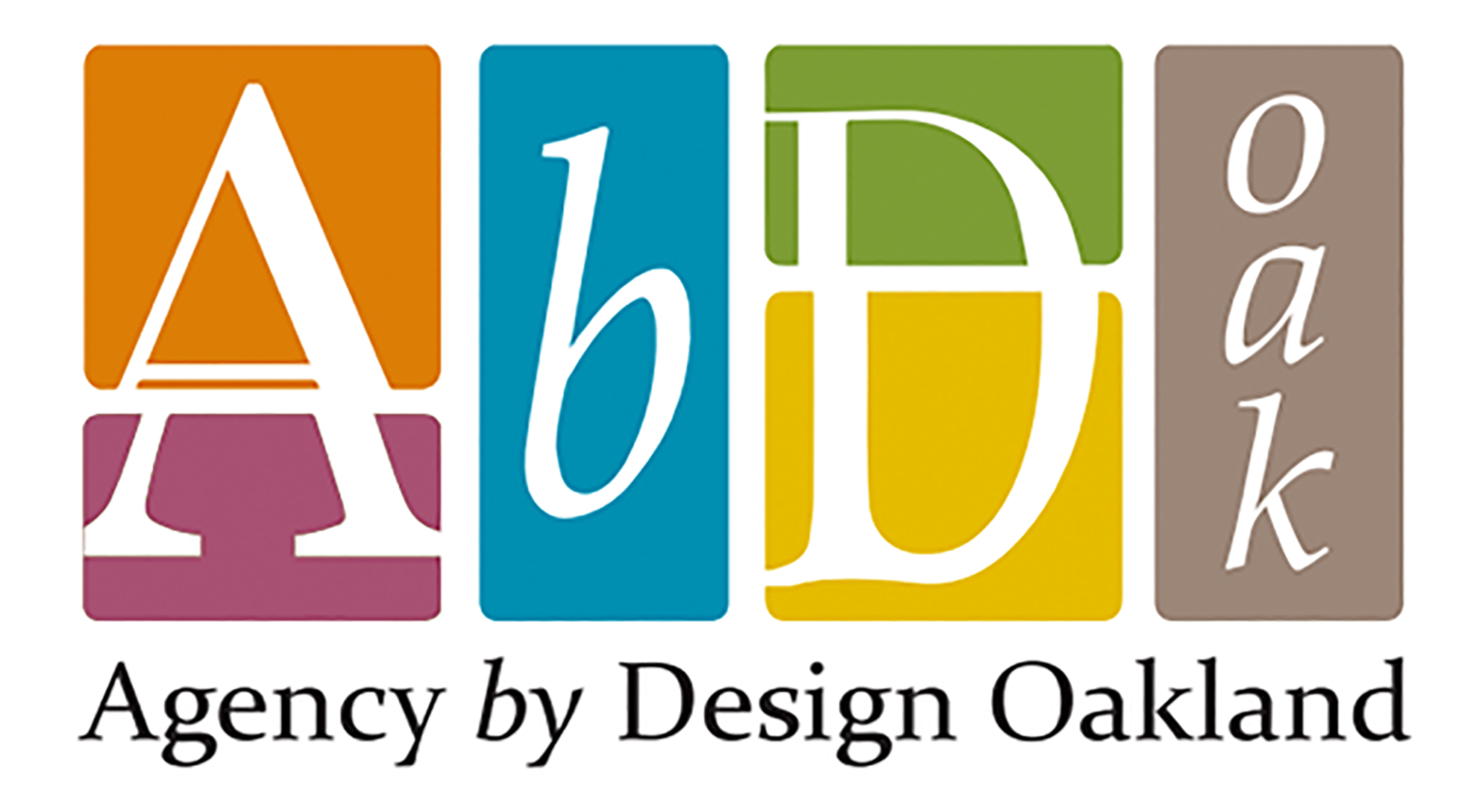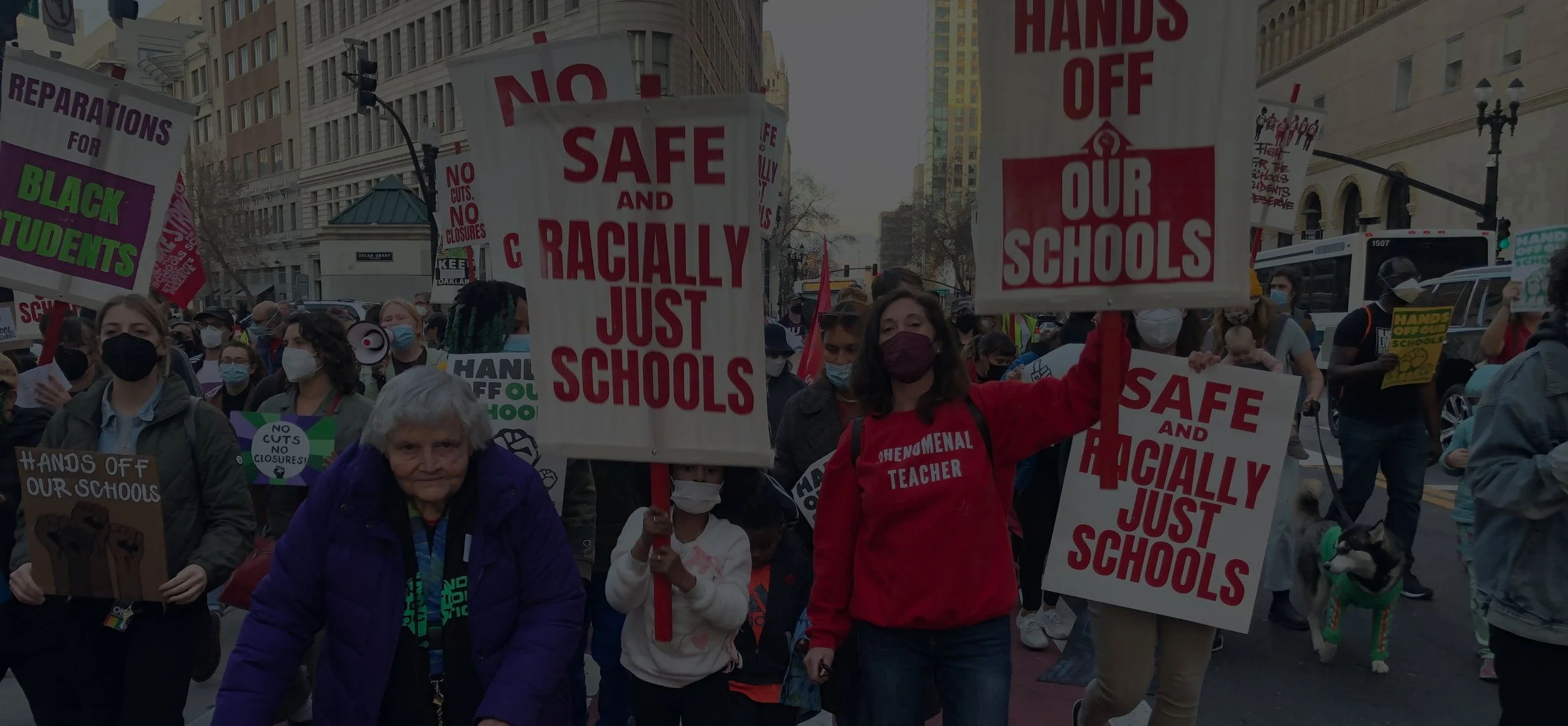On my best days I am a warm ray of sunshine, a loving compassionate presence for our young people, families, staff and community partners at my school home: Garfield Elementary. On my not so great days, I am grinding, forgetting to drink water, skipping meals and caught up in my head double-Virgo task-master. All in all, my role as Community School Manager at Garfield now in my 3rd year, while participating in the Agency by Design Oakland Fellowship for educators of color, has taught me a tremendous amount about how I navigate the world as a whole person.
At AbDO, the throughline for our learning has been:
how do I design for healing, self-love, and agency?
In light of the moment we are currently living in, I find myself returning to what I know to be true: the antidote to hopelessness & despair, hate & repression, and all forms of oppression… is building community and a sense of belonging. I’ve known this to be true all my life, as someone who grew up surrounded by beautiful, resilient Black & Brown people in a community heavily impacted by years of systemic neglect and racism.
Since Trump was elected, many of the families & children at Garfield Elementary have shared feeling high levels of stress and anxiety with the uncertainty of these times and the devastating possibility of being separated from their family. Some families kept their children home for fear of rumored ICE activity around the neighborhood where our school is located. Families shared with me that their children as young as five were having a hard time sleeping at night worrying about their parents’ safety. As a result of listening to families’ experiences, I was reminded of the power of gathering, and having a space where people can meet and get to know each other, especially parents whose cultures & languages are different from their own.
Family and Staff gathering at Garfield Elementary, Oakland
At Garfield, we do this by hosting monthly gatherings called “Coffee with the Principal.” We focus on community building, giving families the opportunity to interact with one another, learn about parents’ wins and challenges and deepen our connection to the school community.
One of the themes in my apprenticeship program lately is leading for EMERGENCE. So I proposed to our Principal that we have a special “Coffee with the Principal” and focus on offering our families not just information about what their rights are legally, but also reassurance and a space where we can witness & affirm each other’s humanity. I gathered all the courage in my heart, because I knew this would not be an easy space to hold, and lots of emotions and fear would be present.
I decided to step into emergence by trusting in the people and process. I heard the whisper of my beloved ancestors: gather the people and they will each bring the medicine of their own hearts.
What happened in this space was powerful, beautiful and transformative. We had a very diverse group of families attend. Some parents had seen each other before, a few knew each other’s names; but for many it was their first time at a “Coffee with the Principal.”
We opened up with a warm welcome and ice-breaker to get to know each other’s names. The activity was called “pass the ball” - we all stood in a circle facing each other. The goal was to make eye contact with someone across the room, learn their name and then pass the invisible ball to them. By the end of the exercise, folks were laughing and had experienced connection with others in the space.
I was nervous about presenting the slides I had prepared because there was a lot of information about what to do if you are ever stopped by immigration at your job, in your car, on the street, or at school. I thought to myself, I am not a lawyer so what if legal questions come up and I don’t know the answer. Then I remembered the times I facilitated “Know your rights” workshops over a decade ago when I was actively involved in the immigrants rights movement in the Bay Area & nationally. It was the act of being together in community, and the embodied experiences of seeing each other and our own humanity that supported us being able to know and exercise our rights. This knowledge doesn’t come from information in our brains, but a deeper knowing and conviction that one develops in community (not in isolation) of our inherent value and worth as human beings… our human dignity. That is what I knew I needed to tap into.
Image of bright yellow, hand-made poster that reads “Keeping Families Together”
With this knowledge, I began sharing the story of how my parents were undocumented growing up. And how as a child, I was often afraid of being deported and separated from my family, even though I was born here. I didn’t realize that I had different legal rights than my parents and family members. Reflecting on this experience brought me to the realization that just as a child can internalize their parents’ fears, they can also internalize their parents’ sense of human dignity and resilience. So in light of all that we are surrounded by and so many things we cannot control or influence, one thing we can control is what we convey to our children and thus to ourselves. In reassuring our children, we reassure ourselves.
Knowing our rights starts with believing in our own humanity.
No matter what the rules are, who is in power, what legislation passes or doesn’t pass: our humanity remains. I began to see their faces change, from anxious and fearful to fiery and determined. One dad raised his hand and began to share, with tears in his eyes, how he reassures his son that no matter what, we are going to be ok because our people have always figured out a way. And this is no different. We cannot allow fear to paralyze us. We must keep moving forward. There were many tears by now.
The conversation continued, with more voices entering the space. Parents listened intently, witnessed and reassured each other. Language was not a barrier in this space and I could hardly keep up with translation. Believing in our own humanity starts with being able to witness each other and see each other.
One of the many things that keeps me going when things get tough are our families: their tenacity, fierce love for their babies, and deep compassion for one another despite sometimes having very different lived experiences. We got through some of the slides, not all of them, but that didn’t matter. By the end, families had cried and laughed together, shared stories together and opened up their hearts to one another. I realized that all is not lost.
Honestly, there have been several times the past two years when I have questioned whether or not I belong in the role I am in, as a school leader. Be it imposter syndrome, internalized oppression, living in a world that tells me my voice & lived experiences don’t matter, or a number of other factors.
What I walked away with that morning was clarity that this is the way forward: building community intentionally.
That day designing for healing, agency and self-love was the tool I used as a school leader to encourage myself and others to show up just as we are so that we could experience much needed belonging. This strengthens us collectively so that when the time comes, we will be able to speak up and stand up. We will be prepared to assert our humanity and affirm humanity of others.
Photo of Laura Rivas
About the Author:
Laura Rivas, M.A., currently serves as a Community School Manager at Garfield Elementary School in the San Antonio neighborhood, one of the most culturally and linguistically diverse communities in Oakland. Laura is passionate about nurturing leadership in youth & families and creating meaningful engagement experiences that are transformative for school staff and community. Laura began her journey at the intersection of organizing & education as a young person organizing and advocating for improved learning conditions & opportunities for students & families in her community. Seeing first-hand the harmful impacts of racist policies like the 3-strikes law and zero tolerance practices in schools, Laura is a dedicated abolitionist educator grounded in restorative practices and the firm belief in the innate goodness of all young people.
As the parent to two precious seeds (children) ages 11 and 15, Laura is committed to healing generational trauma and supports her community as a sahumadora (fire-keeper) in traditional ceremonial dance originating in Mexica culture. Laura enjoys dancing to cumbias, hikes in the redwoods and playing with her two siamese cats.











